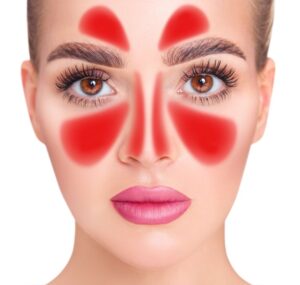
Understanding Atopic Dermatitis in Adults
Atopic dermatitis, a common skin condition, affects many adults. Learn about its causes, symptoms, treatments, and how it manifests through pictures.
Related Topics (Sponsored Ads):

What Causes Atopic Dermatitis?
Atopic dermatitis (AD), often referred to as eczema, is a chronic inflammatory skin condition that typically starts in childhood but can persist into adulthood. The exact cause of atopic dermatitis is not fully understood, but it is believed to result from a combination of genetic, environmental, and immunological factors. Individuals with a family history of eczema, asthma, or hay fever are more likely to develop atopic dermatitis, suggesting a strong genetic component.
Environmental factors such as allergens, irritants, and changes in weather can trigger or exacerbate symptoms. For instance, exposure to harsh soaps, detergents, and certain fabrics can irritate the skin, while allergens like dust mites, pollen, and pet dander can provoke flare-ups. Additionally, emotional stress and hormonal changes can also play a significant role in the onset and severity of atopic dermatitis. Understanding these triggers is crucial for managing the condition effectively.
Recognizing Atopic Dermatitis: Symptoms and Pictures
Atopic dermatitis manifests through a variety of symptoms, which can vary in severity from person to person. Common symptoms include intense itching, red to brownish-gray patches on the skin, and thickened, cracked, or scaly skin. In adults, these patches commonly appear on the hands, wrists, arms, legs, and the inner elbows and knees. The face and neck can also be affected, leading to significant discomfort and social distress.
Visual documentation of atopic dermatitis, such as pictures, can help in identifying the condition. Pictures often show inflamed, swollen skin with visible rashes that may ooze or crust over. Seeing these images can be helpful for individuals to recognize the early signs of a flare-up and seek timely medical intervention. However, it’s important to note that a professional diagnosis is essential, as other skin conditions can mimic the appearance of atopic dermatitis.
Treatments for Atopic Dermatitis in 2024
The treatment of atopic dermatitis has evolved significantly, with 2024 bringing new advancements aimed at providing relief and improving quality of life for sufferers. Treatment plans are typically tailored to the individual and may include a combination of topical treatments, systemic medications, and lifestyle modifications.
Topical corticosteroids remain a cornerstone of treatment for reducing inflammation and controlling flare-ups. Non-steroidal topical treatments, such as calcineurin inhibitors, are also used, especially for sensitive areas like the face. Recent developments include topical JAK inhibitors, which target specific pathways in the inflammatory process, offering a new avenue for managing the condition.
Systemic treatments may be necessary for more severe cases. These can include oral or injectable medications such as biologics that target the immune system to reduce inflammation. Dupilumab, an injectable biologic, has shown promise in treating moderate to severe atopic dermatitis by blocking specific proteins involved in the inflammatory process. Additionally, advancements in phototherapy, which involves exposing the skin to controlled amounts of natural or artificial light, continue to provide relief for many patients.
Managing Atopic Dermatitis: Tips for Adults
Living with atopic dermatitis requires a comprehensive approach to manage symptoms and prevent flare-ups. For adults, developing a consistent skincare routine is essential. This includes using gentle, fragrance-free cleansers and moisturizers to maintain skin hydration and barrier function. Regular moisturizing helps to protect the skin from irritants and prevent dryness, which can trigger itching and scratching.
Identifying and avoiding triggers is another key aspect of management. This may involve making changes to your environment, such as using hypoallergenic bedding, reducing exposure to allergens, and avoiding harsh chemicals. Stress management techniques, such as mindfulness and relaxation exercises, can also play a significant role in reducing the frequency and severity of flare-ups.
Additionally, seeking support from healthcare professionals, including dermatologists and allergists, can provide personalized treatment plans and access to the latest therapies. Support groups and patient organizations can offer valuable resources and a sense of community for those living with atopic dermatitis.
Conclusion
Atopic dermatitis in adults can be challenging, but understanding its causes, recognizing symptoms through pictures, and staying informed about the latest treatments can significantly improve management. In 2024, advancements in medical treatments and a comprehensive approach to skincare offer hope and relief to those affected by this chronic condition. By staying proactive and seeking professional guidance, adults with atopic dermatitis can achieve better control over their symptoms and enhance their quality of life.
This information does not constitute medical advice and it should not be relied upon as such. Consult with your doctor before modifying your regular medical regime.
Related Topics (Sponsored Ads):
Discover More






